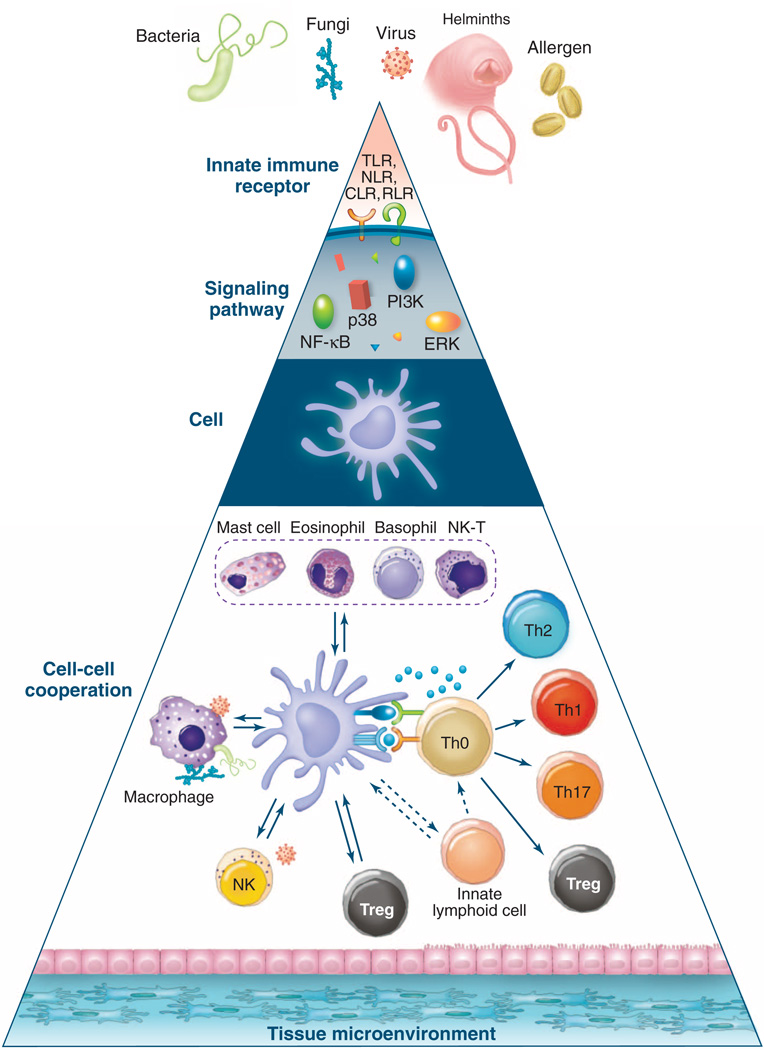Fig. 3.
Hierarchies of organization in the innate immune system. The complexity of the innate immune system in sensing stimuli and orchestrating type 2 immune responses can be conceptualized as occurring in different hierarchies of organization. The cell (that is, the dendritic cell) can be considered as the ground level; the innate receptors expressed by the cell and the signaling networks within the cell represent higher-resolution levels of the hierarchy. Conversely, cell-cell cooperation and the impact of the tissue microenvironment represent more global views of the hierarchy. This model offers a conceptual framework for therapeutic interventions to allergic inflammation. Thus, one might envision targeting the signaling level (for instance, by inhibiting ROS in DCs), the cellular level (for example, by inhibiting migration of cells such as DCs or basophils), or the cell-cell cooperation level (by inhibiting molecules such as TSLP, IL-25, and IL-33 that mediate cell interactions). RLR, RIG-I–like receptors; PI3K, phosphatidylinositol 3-kinase; NK-T, natural killer T cells.

